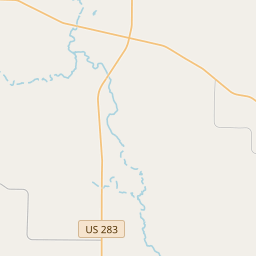Cottonwood Bank and Post Office
Historical marker location:






W. F. Griffin opened a bank about 1911 in this small frame building. With Griffin as a director, Paul Ramsey served as the first president. His duties included teller, cashier, loan officer and custodian. When the railroad bypassed Cottonwood, merchants and residents moved away. In January 1915, the bank closed. In 1918 Hazel Respess opened a post office in the building and ran it for the next 50 years. In 1975, postal service here was stopped. This spot has been a gathering place for the community.
(1978)
1775: The Second Continental Congress establishes the Constitutional Post to provide postal services in the thirteen American colonies. Benjamin Franklin is appointed as the first Postmaster General.
1792: The Postal Service Act is passed, officially establishing the United States Postal Service as a federal agency. It sets the foundation for the organization and regulation of postal operations.
1847: The introduction of prepaid adhesive postage stamps revolutionizes mail delivery, simplifying the process and promoting efficiency.
1860: The Pony Express, a fast mail delivery service, is launched to transport mail between the eastern and western regions of the United States. It becomes famous for its daring riders and swift delivery.
1863: Free city delivery is introduced, allowing mail to be delivered directly to urban households and businesses rather than being picked up from local post offices.
1864: The Postal Money Order system is established, providing a secure way for people to send money through the mail.
1896: Rural Free Delivery (RFD) is implemented, bringing mail delivery to rural areas for the first time. This service significantly improves communication and connects rural communities to the rest of the country.
1971: The United States Postal Service is reorganized as an independent agency within the federal government, operating as the USPS. It is no longer directly controlled by the Postmaster General.
1974: The USPS introduces the ZIP (Zone Improvement Plan) Code system, which assigns unique codes to geographic areas to improve mail sorting and delivery efficiency.
1997: The USPS launches its website, usps.com, providing online access to postal services, tracking, and information.
2001: Following the 9/11 terrorist attacks, the USPS faces security challenges and undergoes significant changes to enhance mail screening and protection.
2013: The USPS announces the end of Saturday mail delivery for regular letters and reduces delivery to five days a week.
Present: The USPS continues to be a vital service, handling billions of pieces of mail annually and adapting to changes in technology, communication, and the shipping industry. It plays a crucial role in connecting people, facilitating commerce, and serving as a backbone of the American communication infrastructure.
This timeline provides an overview of key milestones in the history of the USPS, which has played a crucial role in facilitating communication and connecting communities throughout the United States for over two centuries.
As one of the most visible programs of the Texas Historical Commission (THC), historical markers commemorate diverse topics in Texas history, including: the history and architecture of houses, commercial and public buildings, religious congregations, and military sites; events that changed the course of local and state history; and individuals who have made lasting contributions to the state, community organizations, and businesses.
The Alamo, a mission in San Antonio, is perhaps the most famous historical site in Texas. It was the site of a key battle during the Texas Revolution in 1836.
In 1858, the Texas Legislature officially established Callahan County, naming it after James Hughes Callahan, a ranger and soldier in the Texas Revolution. The county's early economy relied heavily on agriculture, with cotton being the main cash crop and cattle ranching also playing a significant role.
During the Civil War, like many regions of Texas, Callahan County experienced unrest and hardship. After the war, however, the county quickly recovered, and the construction of the Texas and Pacific Railway in the late 19th century further fueled growth and development. The railroad brought new settlers, boosted trade, and led to the establishment of towns like Baird, Cross Plains, and Clyde.
Throughout the 20th century, Callahan County continued to evolve and diversify its economy. Oil was discovered in the area in the 1920s, leading to the establishment of oilfields and the growth of the petroleum industry. Agriculture remained important, with crops like wheat, milo, and sorghum becoming significant, and ranching continued to thrive.
Today, Callahan County is a vibrant community that honors its history while embracing modern advancements. Its rich agricultural heritage, coupled with a growing oil and gas industry, makes this county a resilient and prosperous area within the state of Texas.
Callahan County Timeline
This timeline provides a concise overview of the key events in the history of Callahan County, Texas.
- 1854 - Callahan County is created and named after James Hughes Callahan, a Texas Ranger and legislator.
- Late 1850s - Settlers begin to arrive in the area, primarily from the southern United States.
- 1861-1865 - Callahan County, like the rest of Texas, is greatly impacted by the American Civil War.
- 1872 - Baird is established as the county seat.
- Early 1880s - The Texas & Pacific Railway is built through Callahan County, boosting economic growth.
- Early 1900s - Agriculture, particularly cotton farming, becomes a major industry in the county.
- 1923-1924 - Oil is discovered in Callahan County, leading to a boom in production and economic development.
- 1940s - Callahan County experiences a decline in population due to the effects of World War II.
- 1980s-1990s - The economy diversifies with the growth of manufacturing and retail sectors.
- 2000s - Callahan County continues to be primarily rural, with agriculture and oil production playing significant roles in the local economy.